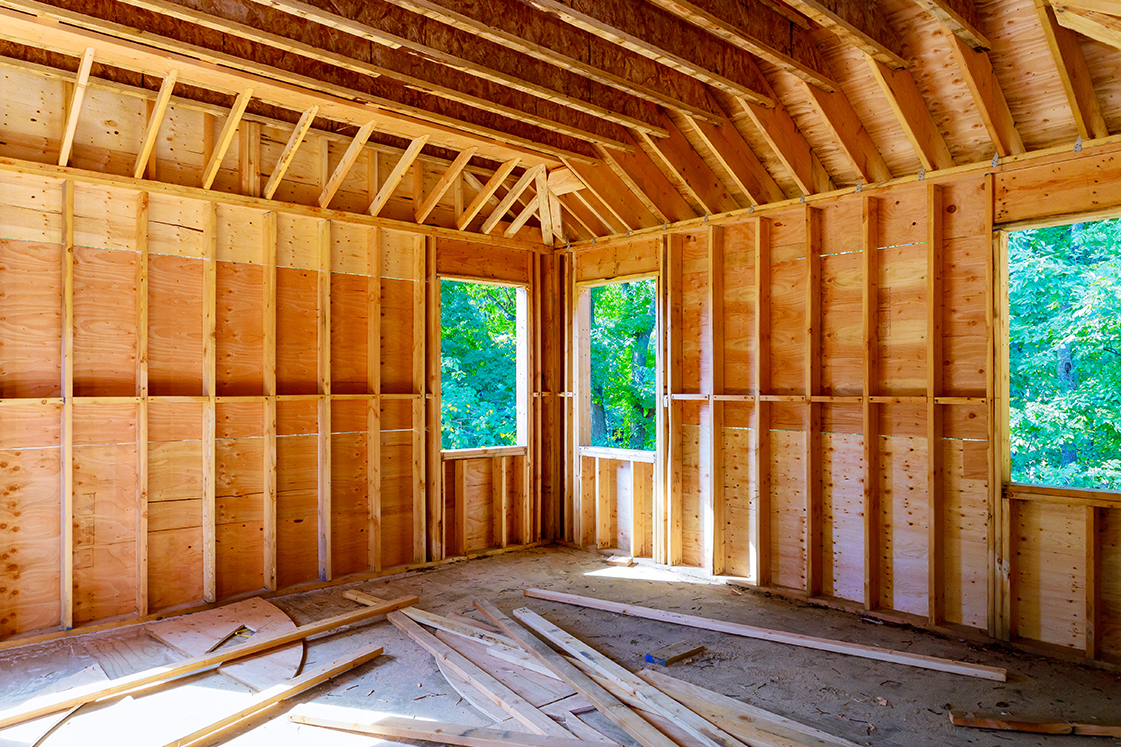What’s unique about a construction loan?
It’s a short-term (usually 12 to 18 months) loan used for the materials and labor needed to construct a home. Sometimes, the funds are also used to purchase the lot the house will be built upon. The interest rate for a construction loan is typically around 1% higher than mortgage rates, but they are variable. So, the rate may change throughout the loan term.
How much down payment do I need?
Many lenders (and almost all banks) require 20%. They do this because, unlike a home loan, there is no way for them to recoup their losses (sell your home) if your loan goes into default. If you own your building lot outright, you can use it as equity towards your home’s construction loan.
Mann Mortgage can offer construction loans for much lower – under 5% for almost all the loan types for borrowers who meet requirements.
How do I know how much money I will need to build a house?
Start your planning by talking to your home lender to see how much you could be approved for. Then, work with a builder to find a home they can build that fits the price you and your home lender discussed. Once you have a detailed building plan for your house, you’ll likely be asked to send it and your builder’s details to your home lender. Most lenders will review your building plans and the land to make sure they appraise for more than your building cost before you are approved for your construction loan.
Can I do some construction work myself to save money on my build?
No, you can’t complete any work on your own as a DIY project. Doing so many lower your home’s appraised value, your work may not meet building standards, and your home may not pass final inspection to receive your certificate of occupancy. Even if you’re a construction professional, you cannot work on your own home’s construction.
What’s the difference between a one-time and two-time close?
A one-time close means you get approved to finance both construction and mortgage for your new home at the same time. After construction is complete, your loan automatically becomes a traditional mortgage. There is one loan and one closing.
A two-time close means you get two loans. The first loan will fund your construction. You will apply for the loan, get approved for it, and close on this loan. Then building begins. At some point as construction nears completion, you will apply for a refinance to turn your construction loan into a 15 or 30-year mortgage. When the refinance is approved, you will close on this loan, and you will now have a mortgage. There are two loans and two closings.
When does the loan interest rate lock?
Locking in your rate means your lender has agreed to give you a specific mortgage rate if the loan is closed within a set length of time. Most lenders lock the rate 30 to 60 days before closing. For a one-time close you would lock the rate for construction and later for the final mortgage. Your file may be reviewed for float down – meaning you would have the option to lock in a lower rate if it has dropped during the lock period. For a two-time close your rate will lock for each loan. Once for the construction loan (and it’s usually one percentage point higher than a mortgage) and once when it is refinanced into a 15- or 30-year mortgage.
How is my builder paid?
Lenders use what’s called a draw schedule. It’s a plan that details how you will send payments to your builder during construction. A builder gets paid as work is done, not in one lump sum. Your lender releases funds slowly as each project milestone is complete. As example, after the foundation is complete or after the framing is done. This minimizes your losses and your lenders losses in the case your builder is dishonest or if they go out of business during the months you’re building.
Working with a local home lender for your construction loan is a wise decision. Local lenders, like Mann Mortgage, know your community and have experience doing construction loans in your neighborhood. They’re also able to recommend a builder for you to work with.

